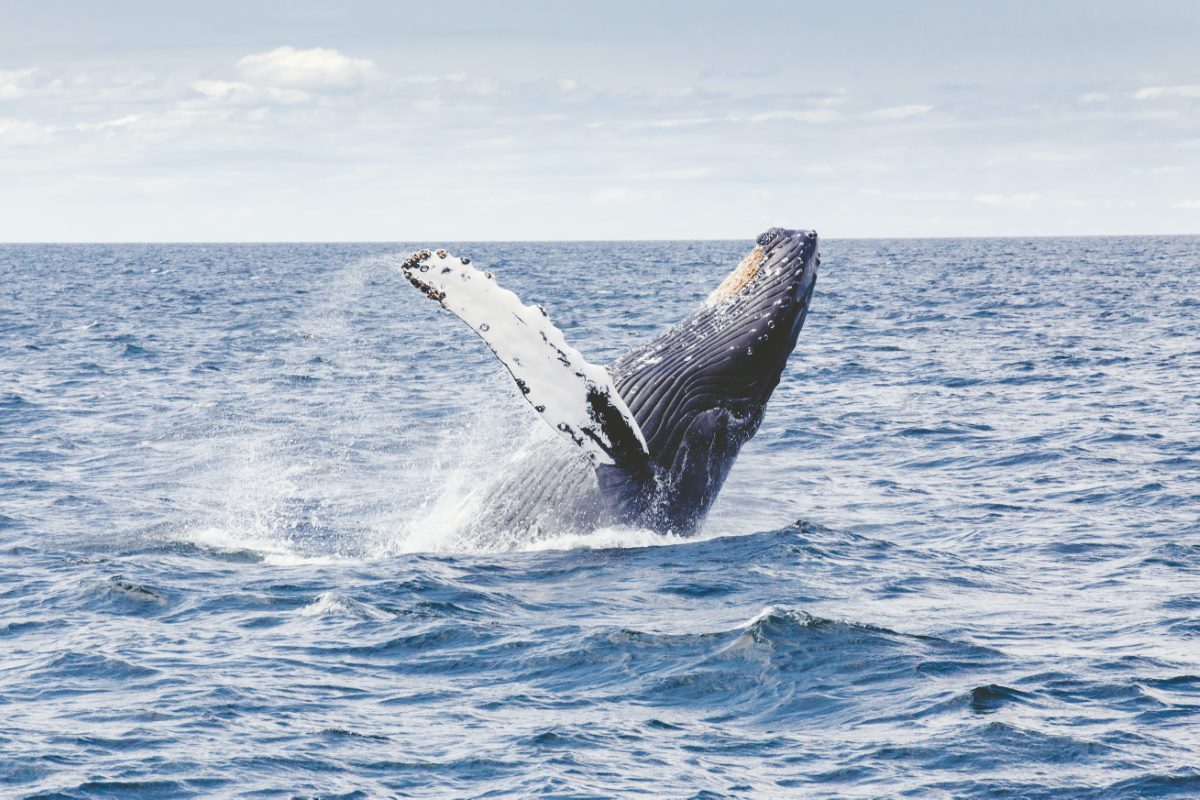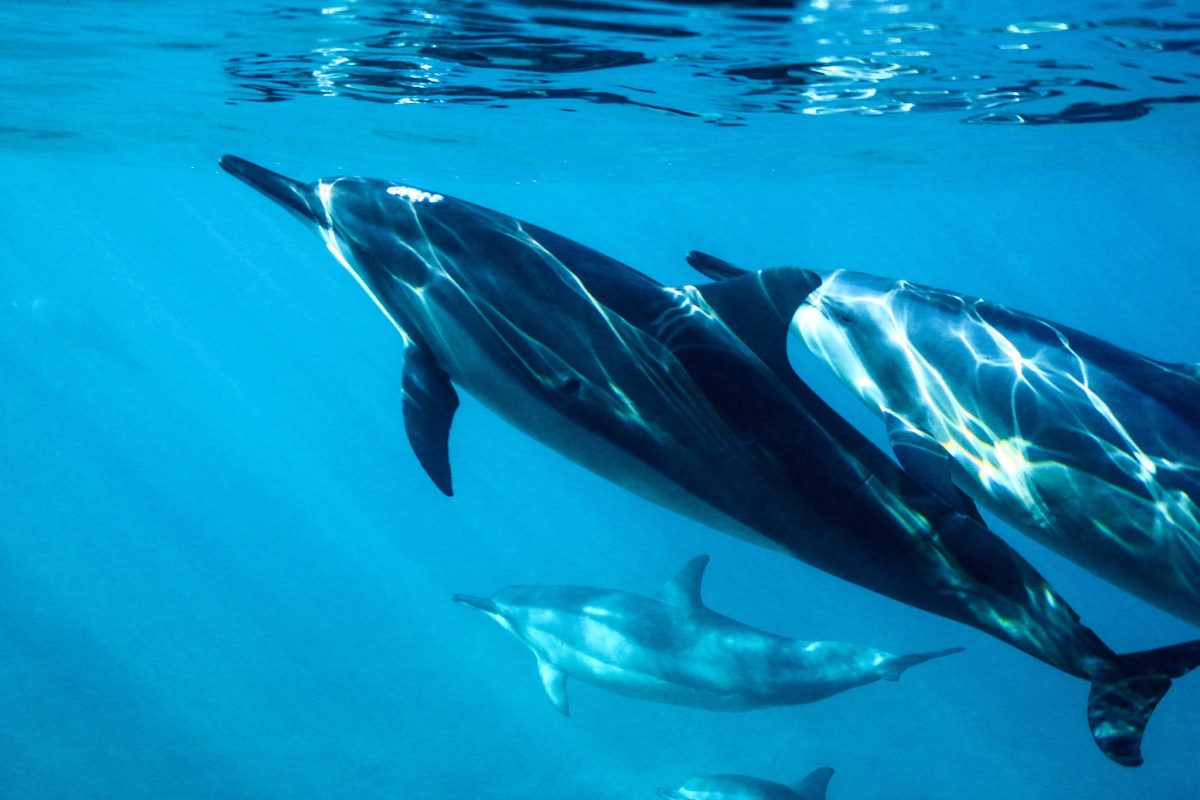Sydney, Australia boasts some of the most spectacular whale watching experiences in the world. From May to November each year, thousands of humpback and southern right whales migrate along the coast as they travel to and from Antarctica. Witnessing these majestic creatures breach and play in the waters off Sydney is an unforgettable experience that should be on the bucket list of anyone visiting the area. In this post, we’ll explore the best locations for whale watching in Sydney and share some of the unique experiences offered by local tour operators. Get ready for an adventure of a lifetime!
The 2 Best Whale Watching in Sydney
The 2 Best Whale Watching in Sydney
1. Sydney Whale Watching Cruise Including Lunch or Breakfast

Enjoy a thrilling whale-watching cruise off the coast of Sydney and witness the majestic humpback and southern right whales as they migrate along the coast from May to November. This Sydney Harbour sightseeing and whale-watching tour begins with a delicious breakfast or BBQ lunch onboard the boat while exploring the calm waters of the harbor. After breakfast or lunch, your boat will head towards the Pacific Ocean in search of whales and dolphins. Throughout the tour, a naturalist guide will provide fascinating commentary about Australian marine life. The smaller group size ensures a more comfortable and intimate whale-watching experience. If you are not able to spot any whales during the tour, you are guaranteed a free return cruise. This tour includes a BBQ buffet lunch or breakfast, tea, coffee, and live commentary. Don’t miss this opportunity to enjoy the best Sydney whale-watching cruise with guaranteed sightings.
2. Sydney Whale Watching by Speed Boat

Experience a thrilling 2-hour speedboat tour from Sydney and witness humpback whales in their natural environment. Hop on-board the city’s fastest commercial ship and cross Sydney Harbour, witnessing iconic landmarks such as the Sydney Harbour Bridge and Sydney Opera House. As you leave the city behind, you will be taken to the Pacific Ocean for this once-in-a-lifetime experience. Multiple departure times and locations are available for your convenience. All taxes, fees, handling charges, driver/guide, wind/waterproof jackets, food and drinks are included in this seasonal tour. The meeting point is at Campbells Cove Floating Pontoon, located at The Rocks NSW 2000 Australia. Don’t miss this opportunity to have a close encounter with migrating whales on this exciting speedboat tour.
Frequently Asked Questions About Whale Watching in Sydney
If you enjoy being on the water and love animals, whale watching in Sydney should be at the top of your bucket list. Spotting these majestic creatures is an unforgettable experience, but before you head out on your excursion, it’s natural to have some questions. Here are some of the most frequently asked questions about whale watching in Sydney answered.1. What is the best time to go whale watching in Sydney?
While whales can be spotted off the coast of Sydney from May to November, the best time to go is from mid-June to early August. During this time, the humpback whales are migrating north to warmer waters and can often be seen breaching and displaying other acrobatic behaviours. However, sightings can never be guaranteed as these are wild animals that follow their own migration patterns.2. How long does a whale watching tour last?
Most whale watching tours in Sydney last about 2-3 hours. This gives you plenty of time to spot and observe the whales without getting too fatigued. Some operators may offer longer or shorter tours, so be sure to inquire about the duration before booking.3. How close do the boats get to the whales?
According to regulations, boats must maintain a minimum distance of 100 meters from whales in the open ocean. However, if the whales approach the boat themselves, this distance can be reduced to 30 meters. While close-up encounters are certainly exciting, it’s important to remember that these are wild animals and their behaviour is unpredictable. It’s best to observe them from a respectful distance.4. Do I need to bring my own binoculars?
Most whale watching tour operators will provide binoculars for passengers to use during the tour. However, if you have your own pair, it’s always a good idea to bring them along for the best viewing experience.5. What should I wear on a whale watching tour?
Even on a sunny day, the ocean breeze can be chilly, so it’s important to dress warmly. Layers work well so you can shed them as the temperature increases. Don’t forget to bring a hat and sunscreen as well, as the Australian sun can be strong even on overcast days.6. Can I bring food and drinks on the boat?
Most operators will allow you to bring snacks and non-alcoholic drinks on board. However, it’s important to be respectful of the environment and dispose of any waste responsibly. Some operators may also have food and drink available for purchase on board.7. Is it ethical to go whale watching?
Whale watching can be done ethically and sustainably if proper regulations and guidelines are followed. Operators should be licensed and certified by the appropriate authorities. They should also follow industry best practices for approaching and observing the whales while minimizing disturbance to their natural behaviour and environment.8. What happens if we don’t see any whales?
While it’s rare not to spot any whales during a tour, it can happen. Most operators will offer a guaranteed sighting policy, meaning if no whales are seen, you can take another tour free of charge. However, it’s important to remember that these are wild animals, and sightings cannot be guaranteed.9. Are whale watching tours suitable for children?
Whale watching tours can be a fantastic experience for children, but it’s important to assess each child’s individual temperament. Young children may become restless or bored during the tour, so it’s a good idea to bring along some snacks or activities to keep them occupied. Some operators may have age restrictions or special pricing for children, so be sure to inquire before booking.10. What kind of whales can I expect to see in Sydney?
The most common whale sightings in Sydney are of humpback whales, but other species that can be spotted include southern right whales, minke whales, and sometimes even orcas. Dolphin sightings are also common, so keep your eyes peeled for these playful creatures as well.Whale watching in Sydney is an incredible experience, but it’s important to approach it with respect for these magnificent creatures and their environment. By following proper regulations and guidelines, we can continue to enjoy and appreciate these animals for years to come.How to do Whale Watching in Sydney: A Comprehensive Guide
Whale watching is one of the most thrilling activities to do in Sydney, Australia. If you’re lucky, you’ll be able to catch sight of some magnificent sea creatures as they blow and splash around in the water. However, it’s important to remember that whales are wild animals and seeing them is never guaranteed.With that in mind, this guide will provide you with all the information you need to have a successful and safe whale watching experience in Sydney.1. When is the best time to go whale watching in Sydney?
Whale watching season in Sydney generally starts in May and ends in November. However, the peak season for humpback whale sightings is from June to August. During this time, you’re most likely to spot these majestic creatures as they migrate from their feeding grounds in Antarctica to their breeding grounds in the warmer waters of Northern Queensland.2. What are the best places to go whale watching in Sydney?
There are several excellent whale watching locations around Sydney. Some popular ones are:a. Bondi Beach
Bondi Beach is a great place to spot whales from land. You can often see them breaching and playing in the waters just off the shore. There are several lookouts along the beach that offer great views, including Bondi Icebergs, Bondi Pavilion, and Bondi North.b. Sydney Harbour
Whale watching tours depart from Circular Quay and Darling Harbour, taking you out into the open waters of Sydney Harbour. From here, you’ll be able to spot not only whales but also dolphins, seals, and a variety of seabirds.c. Botany Bay
Botany Bay is home to several whale species, including humpbacks and southern rights. It’s also a great spot for birdwatching, with white-bellied sea eagles, ospreys, and pelicans often seen in the area.3. How to choose the right whale watching tour?
Choosing the right whale watching tour can make all the difference in your experience. Here are some key factors to consider:a. Size of the boat
Smaller boats can often get closer to the whales, providing a more intimate experience. However, they can also be less stable, making them more prone to sea sickness. Larger boats may not get as close to the whales, but they’re generally more stable and comfortable.b. Tour duration
Whale watching tours can range from 2-6 hours. Choose a tour that suits your schedule and budget.c. Amenities on board
Some whale watching tours offer amenities like toilets, snacks, and drinks. Others may provide binoculars and marine life educational materials.d. Reputation and reviews
Do your research and read reviews from previous customers before booking a whale watching tour. Look for companies with a good reputation for safety, environmental responsibility, and customer service.4. What to bring on a whale watching tour?
Here are some essentials to bring on a whale watching tour:a. Warm, waterproof clothing
Even on a warm day, the open waters can be chilly and windy. Bring warm, waterproof clothing to stay comfortable.b. Sun protection
The Australian sun can be intense, so bring sunscreen, a hat, and sunglasses to protect your skin and eyes.c. Camera
Bring a camera or smartphone to capture photos and videos of the whales.d. Sea sickness remedies
If you’re prone to sea sickness, consider bringing remedies like ginger chews, motion sickness bands, or medication prescribed by your doctor.5. Whale watching etiquette
When whale watching, it’s important to follow these guidelines to protect the whales and their environment:a. Keep a safe distance
Stay at least 100 meters (328 feet) away from the whales. Never approach them or chase them.b. Turn off engines
When approaching whales, turn off boat engines to reduce noise pollution and avoid startling the whales.c. Do not feed or touch the whales
Feeding or touching wildlife is prohibited. Also, remember that these are wild animals and should be respected.d. Dispose of garbage and waste properly
Always dispose of waste properly and avoid throwing anything overboard.Book Your Tour Now
Whale watching in Sydney can be an unforgettable experience. By following these tips, you’ll increase your chances of spotting these magnificent creatures and have a safe, enjoyable time. Remember to always respect the whales and their environment, and leave nothing but footprints behind.Table of Contents

